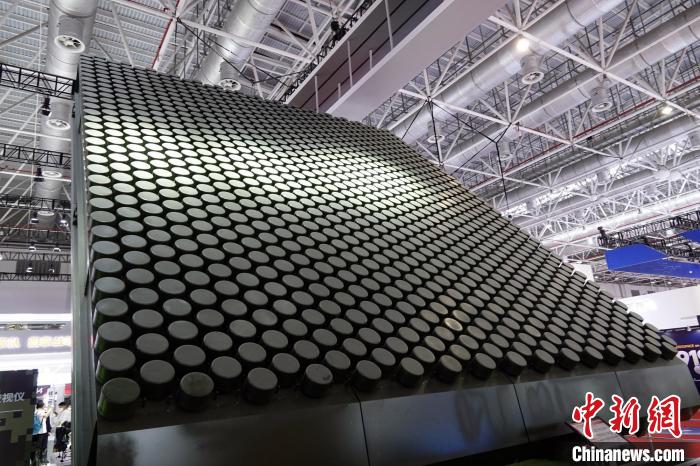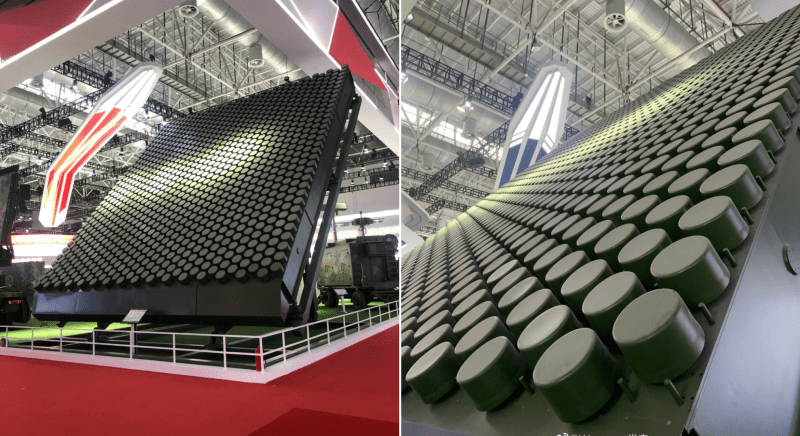HAIDER
ELITE MEMBER

- Joined
- May 21, 2006
- Messages
- 33,771
- Reaction score
- 14
- Country
- Location
The latest air show proved that Chinese expertise is continuing to grow in the field of radar technology. On opening day of the Zhuhai Air Show, the China Electronics Technology Group Corporation (CETC) Showcased the SLC-18 P-Band radar. It is an AESA (active electronically scanned array) radar, which means that each receiver also acts as a singular transmitter. This greatly improves the efficiency of the radar and likely means it can serve multiple functions simultaneously. The SLC-18 operates in a low frequency band, which allows it to have better fidelity at tracking low-observable aircraft and drones, and satellites.
At the closing of the air show, it was announced that China will be gifting the SLC-18 to Pakistan, which will likely use it to track India’s reconnaissance constellation. It is likely that this radar will aid in counter-reconnaissance by allowing the Pakistanis to track and calculate when certain electro-optical or infrared satellites are overhead.



China Electronics Technology Group Corporation (CETC) unveiled the SLC-18 space surveillance radar (pictured above) during Airshow China 2022 in Zhuhai in November. (Future Publishing via Getty Images)
China unveiled a space surveillance radar that can also be used to track anti-ballistic missiles (ABMs), during the Airshow China 2022 exhibition held in Zhuhai from 8 to 13 November.
Janes analysis of SLC-18 images suggests the radar is approximately 9 m tall and 8 m wide. The antenna face of the low-frequency radar array is covered with 960 disk-shaped cross-polarised antenna elements mounted at an elevated angle by a hydraulic assembly.
Information accompanying the displayed equipment indicated that the SLC-18 has a solid-state active electronically scanned array (AESA) design, and functions in the P-band (250–500 MHz) radio frequency (RF) spectrum.
The radar is used for upper atmosphere and space surveillance, and can search, detect, and track objects such as ballistic missiles and low Earth orbit (LEO) satellites.
In addition, the system can build a catalogue for forecasting LEO satellites, as well as acquire multitarget track and measurement data.
The SLC-18 has a digital, fully coherent, solid-state design. The radar's ability to operate in low frequency indicates that it has anti-stealth capabilities. It can be transported by land by a trailer truck convoy.
The JY-26 ‘Skywatch' radar with its disk-shaped polarised elements – displayed in the 2014 China Airshow – had a design similar to that of the SLC-18. The JY-26 was displayed in a smaller antenna array configuration with 512 dipole elements.
At the closing of the air show, it was announced that China will be gifting the SLC-18 to Pakistan, which will likely use it to track India’s reconnaissance constellation. It is likely that this radar will aid in counter-reconnaissance by allowing the Pakistanis to track and calculate when certain electro-optical or infrared satellites are overhead.

Takeaways From China’s Zhuhai Air Show 2022
Real gains were shown in China’s missile, radar, unmanned systems, and fighter technology.
thediplomat.com
China displays transportable SLC-18 space surveillance radar
by Naqi Wasif

China Electronics Technology Group Corporation (CETC) unveiled the SLC-18 space surveillance radar (pictured above) during Airshow China 2022 in Zhuhai in November. (Future Publishing via Getty Images)
China unveiled a space surveillance radar that can also be used to track anti-ballistic missiles (ABMs), during the Airshow China 2022 exhibition held in Zhuhai from 8 to 13 November.
Janes analysis of SLC-18 images suggests the radar is approximately 9 m tall and 8 m wide. The antenna face of the low-frequency radar array is covered with 960 disk-shaped cross-polarised antenna elements mounted at an elevated angle by a hydraulic assembly.
Information accompanying the displayed equipment indicated that the SLC-18 has a solid-state active electronically scanned array (AESA) design, and functions in the P-band (250–500 MHz) radio frequency (RF) spectrum.
The radar is used for upper atmosphere and space surveillance, and can search, detect, and track objects such as ballistic missiles and low Earth orbit (LEO) satellites.
In addition, the system can build a catalogue for forecasting LEO satellites, as well as acquire multitarget track and measurement data.
The SLC-18 has a digital, fully coherent, solid-state design. The radar's ability to operate in low frequency indicates that it has anti-stealth capabilities. It can be transported by land by a trailer truck convoy.
The JY-26 ‘Skywatch' radar with its disk-shaped polarised elements – displayed in the 2014 China Airshow – had a design similar to that of the SLC-18. The JY-26 was displayed in a smaller antenna array configuration with 512 dipole elements.
Last edited:








